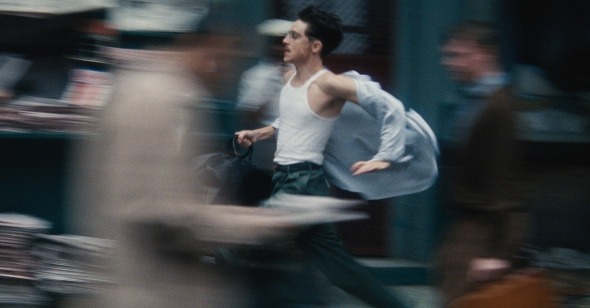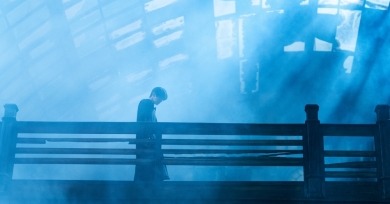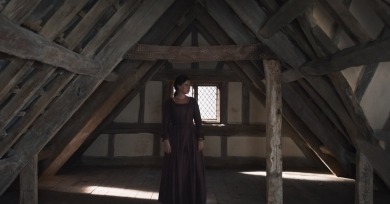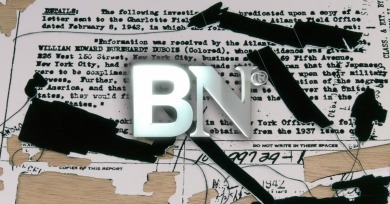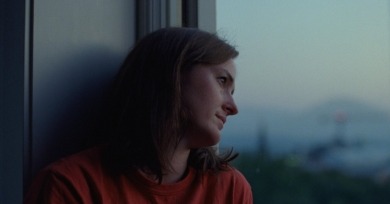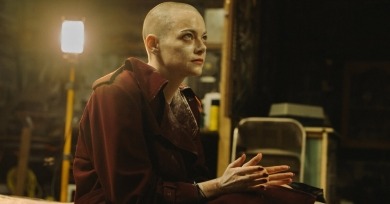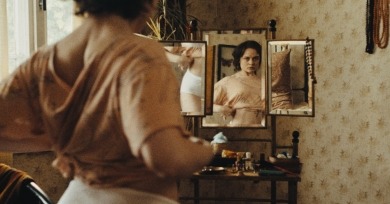Marty Supreme aims for something like grunge Barry Lyndon, a period picaresque epic about a sociopathic climber, but scrappy instead of stately, obnoxious instead of ironic. Yet beneath the grime it’s comparably handsome.
The new book from J. Hoberman traverses a wide swath of mediums and movements that, in his telling, coalesced into what we now recognize as the counterculture of the mid-to-late 1960s.
For this new symposium, we asked our contributors to pitch an idea for an essay centered around a film that somehow utilized or enabled a technology (relatively new or more widely available at the time of its making) that was indivisible from the experience, meaning, or aesthetics of the film itself.
Harnessing the imperfections in the digital cameras’ image-rendering capabilities and rudimentary audio fidelity, Godard confronts the crisis in neoliberalism, the ascendence of digital cinema, and the extinguished dreams of socialism and celluloid from the previous century.
It suggests a unique cinematic aspiration from a time before the film industry dedicated its energies almost entirely to narrative, and when the question of what was to become of cinema was undetermined.
For all our anxieties around the obsolescence of the medium, Bi Gan is moved by an unwavering belief in its subversive powers. Resurrection is not a valentine so much as a manifesto, a rousing wake-up call to all that cinema can still do.
The Secret Agent is a thriller to be sure, but while it delivers the requisite underlying suspense, it also disperses its genre imperatives, hot-wiring this man-on-the-run vehicle to veer off in unpredictable digressions.
The grieving man from Mumbai has the downward stare and stooped shoulders of the touch-starved, his back perpetually stiffened into a forbidding carapace. This is Anand, the recessive center of Cactus Pears, Rohan Kanawade's semi-autobiographical first feature.
Hamnet is impeccably tasteful, the interiors exquisitely and naturally lit and the exteriors strikingly framed, but this tastefulness grows wearying, even stultifying.
I realized that we Black people really have never had our CNN or our New York Times, but we are remarkably well-informed. Even a lot of the uneducated class of folks are remarkably well-informed. I had to ask myself: How is that? Why is that? How are we getting this information?
Khalil Joseph asks the viewer to connect the dots between these places, figures, and events, both fiction and nonfiction, the point is not to figure it all out. BLKNWS is a movie to get lost in, like a hypnotic chopped-and-screwed tape.
Trier seems to be confronting the extent to which life and art coalesce in the lives of creative families, dangling the question of whether artistic genius can redeem one’s personal sins.
Her physical acting might be less obvious than what Poor Things demanded, but if we were to draw a parallel between Michelle Fuller and her Oscar-winning rendition of Bella Baxter, the former is a highly evolved version of the latter judging by how her character assimilates learned behavior.
Sound of Falling anchors the undulations of history in a physical structure, a home inhabited by generations of people. That allows Schilinski to enter the past through oblique, almost surreptitious, methods, which casts history as a moving amalgamation of life’s minor and mirroring moments instead of dramatic apexes.
To invoke another luminary of the New Wave, it is a mid-budget marriage of truth and spectacle of which Truffaut would have approved, the sort of which today has become the most endangered species of filmmaking. In short, it is a film made by the Slacker director who also gave us Dazed and Confused.
